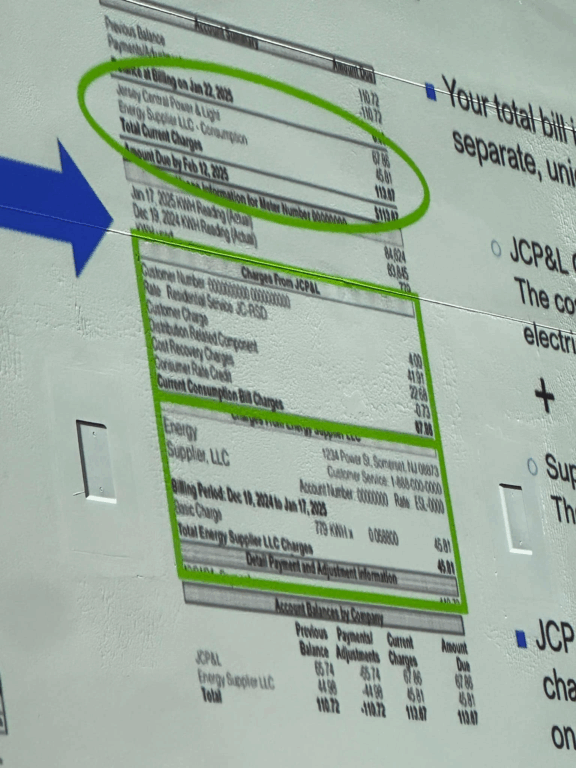TRENTON, N.J. — New Jersey residents are not just facing a 20% electricity rate increase in June; they will have suffered a 32% annual increase between June 1, 2024, and June 1, 2025, with a new 20% increase starting in just two weeks.
This comes on the heels of Governor Phil Murphy’s failed wind-energy hail mary that ended in a complete disaster, leaving New Jersey in a severe energy production deficit.

On Wednesday, Gov. Phil Murphy announced a new suite of executive actions aimed at softening the blow of steep electric rate hikes set to begin June 1, calling on utilities to help offset rising costs linked to PJM Interconnection’s capacity market.
The move marks a pivot from the state’s earlier wind energy ambitions, which failed to meet projected goals.
“New Jersey ratepayers are preparing for an unprecedented increase in utility costs,” Murphy said. “While the utilities are not responsible for the rate increases, they have a responsibility to protect ratepayers.”
Murphy’s plan follows filings submitted last week by the state’s four investor-owned electric utilities—Public Service Electric and Gas, Jersey Central Power and Light (JCP&L), Atlantic City Electric, and Rockland Electric Company—responding to a directive from the New Jersey Board of Public Utilities (NJBPU) to propose measures to ease summer rate impacts. The filings include options such as rate deferment and other cost-stabilizing mechanisms.
Republicans in the legislature balked, saying all Phil Murphy is trying to do is kick the can down the road, until after the November election.

Among the governor’s directives are calls for utilities to voluntarily extend the Winter Termination Program to cover the high-usage months of July through September, suspend reconnection fees, and engage in cost mitigation planning. JCP&L included the expanded termination program in its recent filing. The NJBPU has also been ordered to evaluate funding options and open new solar incentive solicitations.
Customers in affected areas face average bill increases of 17.23% to 20.20%, depending on their service territory, as a result of the 2024 PJM capacity auction and subsequent 2025 Basic Generation Service auction.
Long-term affordability efforts outlined
The administration is expanding efforts to support low-income residents through energy assistance programs. In 2024, New Jersey disbursed about $295 million to over 455,000 households, with an additional $48.7 million provided through the one-time Residential Energy Assistance Payment (REAP) program. A second REAP credit was approved by the NJBPU on April 23.
Efforts to grow the Universal Service Fund (USF), a bill credit program for lower-income households, are also underway. A proposal released in March seeks to raise assistance levels and enforce utility enrollment responsibilities. For a family of four, the USF eligibility threshold is about $92,000 in annual income.
To increase solar access, the state opened another allocation for the Community Solar Energy Program (CSEP), which offers guaranteed savings of at least 15% on subscriber bills. Since launch, CSEP has delivered more than $7 million in net savings to over 28,000 participants.
New Jersey has also opened its third Competitive Solar Solicitation for grid-scale projects. Last year’s round brought in over 300 megawatts of the state’s lowest-cost solar energy to date. Murphy’s office emphasized the role of solar and storage as fast and inexpensive options to address both short- and long-term energy needs.
Focus on generation and nuclear options
In addition to clean energy efforts, the NJBPU issued a Request for Information to explore advanced nuclear technologies as part of a broader strategy to address generation shortfalls. The state aims to identify potential investments that can support long-term stability and affordability amid rising demand from sources like data centers.
Murphy’s energy plan also highlights the impact of efficiency programs already in place. The first cycle of utility-run initiatives has saved customers roughly $600 million. These programs not only lower bills but reduce demand, helping ease pressure on capacity pricing.
While New Jersey’s offshore wind targets have encountered delays and cost barriers, the administration is shifting toward diversified clean energy strategies and exploring new generation methods as part of its affordability roadmap.
Murphy’s new energy initiative shifts focus to stabilizing electric rates through expanded assistance, solar expansion, and nuclear research amid rising PJM costs.
